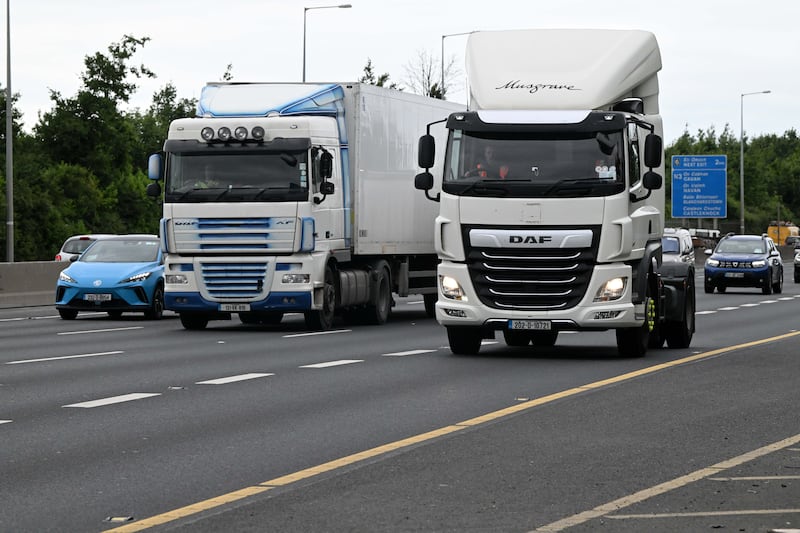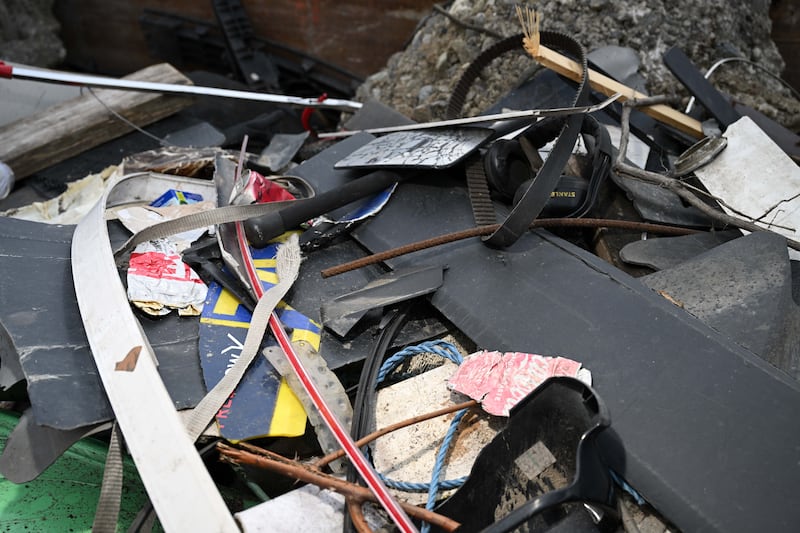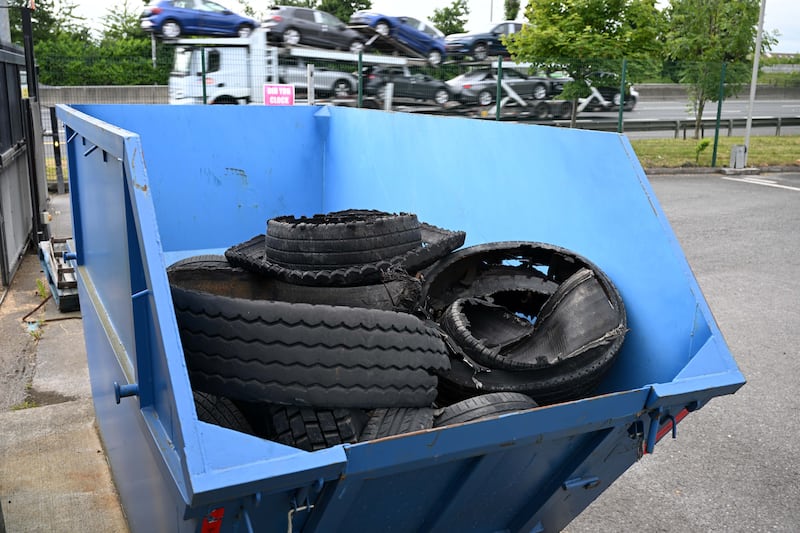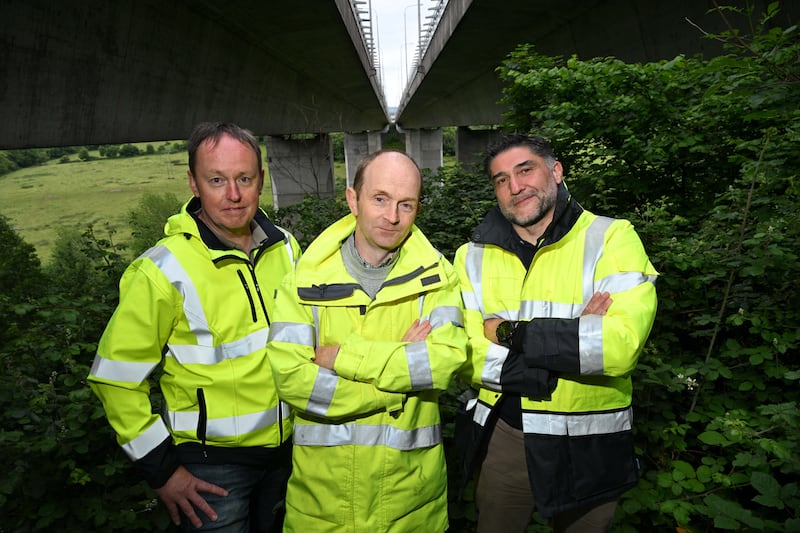Ryan Mulroy is sitting in his “incident support unit” van at Ballymount on the M50, the C-shaped motorway around Dublin.
It is a Tuesday evening in June. Secondary schools have finished for the year, there is good visibility and it is not raining. This is the low season for multiple pile-ups, but there are always incidents on a motorway with an average traffic flow of about 160,000 vehicles a day.
Less than a month ago, the orbital route was the scene of a fatal crash involving a motorcyclist and a lorry. The incident occurred between the M50′s junction 7 at Liffey Valley and junction 6 Blanchardstown. It closed that section of the motorway for almost seven hours.
The disruption to traffic rippled out, causing congestion into the city centre where it remained extremely heavy throughout the day. It showed the impact that the M50 has as a traffic artery for the capital.
READ MORE
“You never know what you are going to meet,” Mulroy says of the incidents that occur on the motorway.
At 5.30pm he receives a call from the Motorway Traffic Control Centre. This central traffic hub, which is run by State agency Transport Infrastructure Ireland (TII), maintains, operates and monitors the M50 and the country’s wider road network from a building next to the Dublin Tunnel.
A three-vehicle crash on the M50 northbound route between junction 12 at Firhouse and junction 11 at Tallaght in southwest Dublin has been spotted by motorway cameras.
Mulroy is there in less than seven minutes. There are no reported severe injuries, but Mulroy’s imperatives are to make a first-hand assessment and to protect the scene from further collisions. He may also take such safety measures as asking drivers to move their vehicles to the side of the road, which might help to keep traffic flowing.
Mulroy arrives behind the crash involving two cars and a van. He places cones 150 metres behind the vehicles to protect them from approaching traffic, including lorries roaring past, just feet away.
He then relays his assessment to the Motorway Traffic Control Centre, including the information that those involved in the crash don’t want medical support but do want gardaí on the scene. The crash is in the left lane and the hard shoulder, but traffic is slowing to a near stop in the other two lanes as vehicles edge around the crash.
A few minutes later, traffic has almost stopped across all lanes. On the opposite side of the motorway, traffic is slowing as people “rubberneck” to see what is happening. Some drivers use camera phones to record the scene. A tailback builds on this southbound carriageway.
While the motorway is effectively shutting down, Mulroy persuades those involved in the crash to move their cars to the hard shoulder – he has no powers to compel. They move their vehicles.
Once the main lanes are cleared, traffic begins moving and picks up speed in the northbound lanes again. Those involved in the crash provide their details to gardaí and the damaged vehicles move on. The scene is cleared by 6.15pm and the tailback, that had stretched to 5km, starts to dissipate.
The incident is a demonstration of what works, working well. Evening rush-hour traffic – between 5pm-6pm – is peak incident time on the M50, according to TII’s 2023 performance figures for the route, with Thursdays typically the M50′s busiest day last year.
And the road has been getting busier: there were 1.6 billion vehicle kilometres travelled in 2023, an increase of 3 per cent on the previous year.

As for incidents, there were 1,933 last year, of which 737 were traffic collisions. The average response time was 15 minutes and the median duration for which incidents affected the M50 was 28 minutes.
Unlike Tuesday’s incident, Mulroy has been on the scene when things do not work out well.
He was one of the first responders in 2019 when a woman lost her life in a three-vehicle crash at an off-ramp at junction 5 near Finglas. He had to make a decision: put out traffic cones and wait for the emergency services, or speak to those stopped nearby who had observed the crash and who were clearly traumatised by what they had seen. He decided to approach the line of cars.
“We knew it was horrific; all we could do was to offer support. Then people knew there was a process being put in place, that the gardaí and the fire brigade, ambulances were on the way,” Mulroy says.
Some people were recording events on their mobile phones. Gardaí, aware that images of the crash were being circulated online, appealed to people “not to share or circulate the images out of respect to the family of the deceased and those involved in the collision”.
“I couldn’t imagine what is going through their heads, probably no malice,” Mulroy says of people posting graphic footage. “It is probably just: ‘Oh look at me – stuck in traffic.’”
Just this week, he attended a scene where a group of motorists had forced a car containing children that was being driven erratically to pull in at the side of the road. The driver was later breathalysed.
“You do have good people,” says Mulroy of those who intervened.
Major incidents that cause sections of the M50 to close are usually fatal events, but not always. In 2021, Mulroy was called to the scene of an overturned lorry on a slip road between junction 11 at Tallaght and junction nine at the Red Cow. Builders rubble from the lorry had spilt across the M50 and closed the motorway, causing widespread traffic disruption across west Dublin.
Debris – usually the remains of blown-out tyres but sometimes as dangerous as a concrete block – is a regular menace. Workers going out on to the motorway to remove material or into the central reservation to cut grass or fix drains are protected by large incident protection vehicles. These are essentially mobile crash barriers protected by flashing lights and warning signs travelling hundreds of metres behind. Yet, in a recent incident, a van passed two sets of warning lights and smashed into the protection vehicle at a speed estimated to be 100km/h.


Given how busy the road is during the day, most road maintenance is carried out at night. For some daytime workers, such as incident responders and grass cutters, the M50 can be a dangerous place to work as thousands of lorries pass within feet of them at noise levels that can be deafening.
But some parts of the M50 are more problematic that others.
Andrew O’Sullivan, a TII engineer, says the reason last month’s motorcycle fatality had such an impact on the motorway was because there is no easily accessible alternative route between Blanchardstown and Liffey Valley. The section includes the West Link bridges, high above the surrounding countryside as the M50 crosses the Liffey. Traffic cannot divert and motorists from Meath and north and central Dublin, heading south of the Liffey, have few alternatives.

Even though traffic on nearby motorways coming into Dublin would be advised of the road closure “as far as 100km out”, there were few options to cross the Liffey, congesting a wide area.
O’Sullivan points to another fatal crash involving a lorry and two motorbikes in June 2022. That incident, which happened between the Red Cow and Liffey Valley, did not cause such congestion because there were alternative routes around the crash site at that location.
When crashes happen, a hierarchy applies, O’Sullivan explains. The top tier comprises the “blue light” workers: gardaí, paramedics and the fire brigade. The M50 incident support units can only protect and advise. If gardaí decide a forensic collision examination is necessary, the road is closed at their instruction.
“That is when it is out of our control,” O’Sullivan says.
“What we try to do is inform people far enough out that they can change their journey,” he says of incidents involving the Blanchardstown to Liffey Valley stretch.
“Make an informed decision to either reroute or go home or whatever they choose to do. But we try to inform them far enough out to allow them to do it.”
For a road that recorded almost 185,000 vehicles one day last year on the busiest stretch between the Blanchardstown and Finglas junctions, this work is critical to keep the traffic flowing.
- Sign up for push alerts and have the best news, analysis and comment delivered directly to your phone
- Find The Irish Times on WhatsApp and stay up to date
- Our In The News podcast is now published daily – Find the latest episode here














